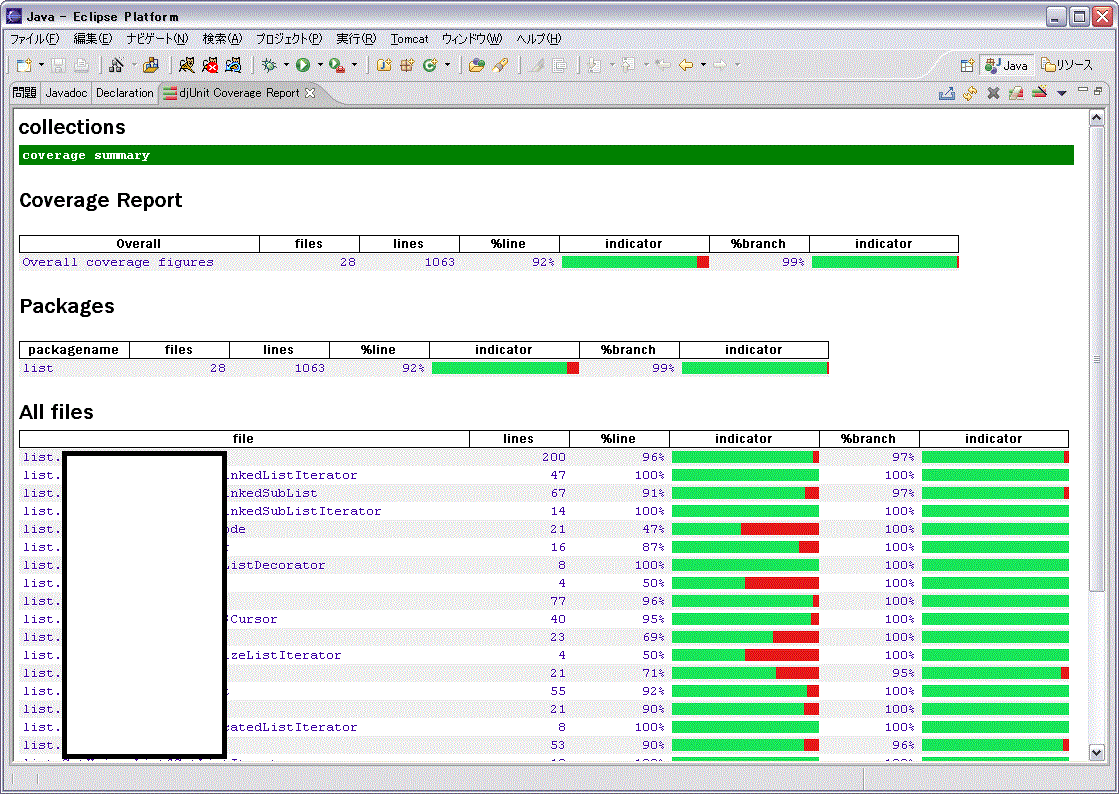[JAVA] What I learned ① ~ DJUnit ~
Introduction
About ** "DJ Unit" ** that I use for testing I would like to summarize it easily.
As a ** entrance ** for those who are new to testing this article I hope I can help you even a little.
About DJ Unit
At first I was confused as to "Is it different from JUnit?" Apparently it can be considered almost the same.
If there is one difference from JUnit,
When you run DJUnit, you can use the coverage report.
↓
 What is coverage in testing ...
To put it simply,
What percentage of the total source to be tested could be confirmed (covered)!
What is coverage in testing ...
To put it simply,
What percentage of the total source to be tested could be confirmed (covered)!
In other words, DJ Unit is functionally ** JUnit ** makes it easy to see the coverage report visually.
After executing the test, in the source to be tested, ** So that you can see where the test actually went and where it didn't. ** It is a specification that wavy lines are attached to places where it is not flowing. It's very convenient because you can immediately see which part is not covered!
When I actually made a test source and let it flow, It often falls in unexpected places. So if you follow the above wavy line, where did you fall? It can also be a clue to identify the cause. (If it fails at the call point of another class, is Mock not working?)
Coverage reports can be easily exported, so You can easily leave it as evidence. (From the icon on the upper right in the image) If you have the opportunity, please take advantage of it.
in conclusion
As one of the things I learned through my work, I briefly wrote about DJ Unit. To be honest, I only write things that will come out immediately if you search, I tried to summarize it in words that are as close to my voice as possible. Rather than searching online or in books to get this knowledge from a lot of information I think it's easy to understand as an entrance.
In the next article, I would like to briefly summarize ** "Mock" **.
Recommended Posts